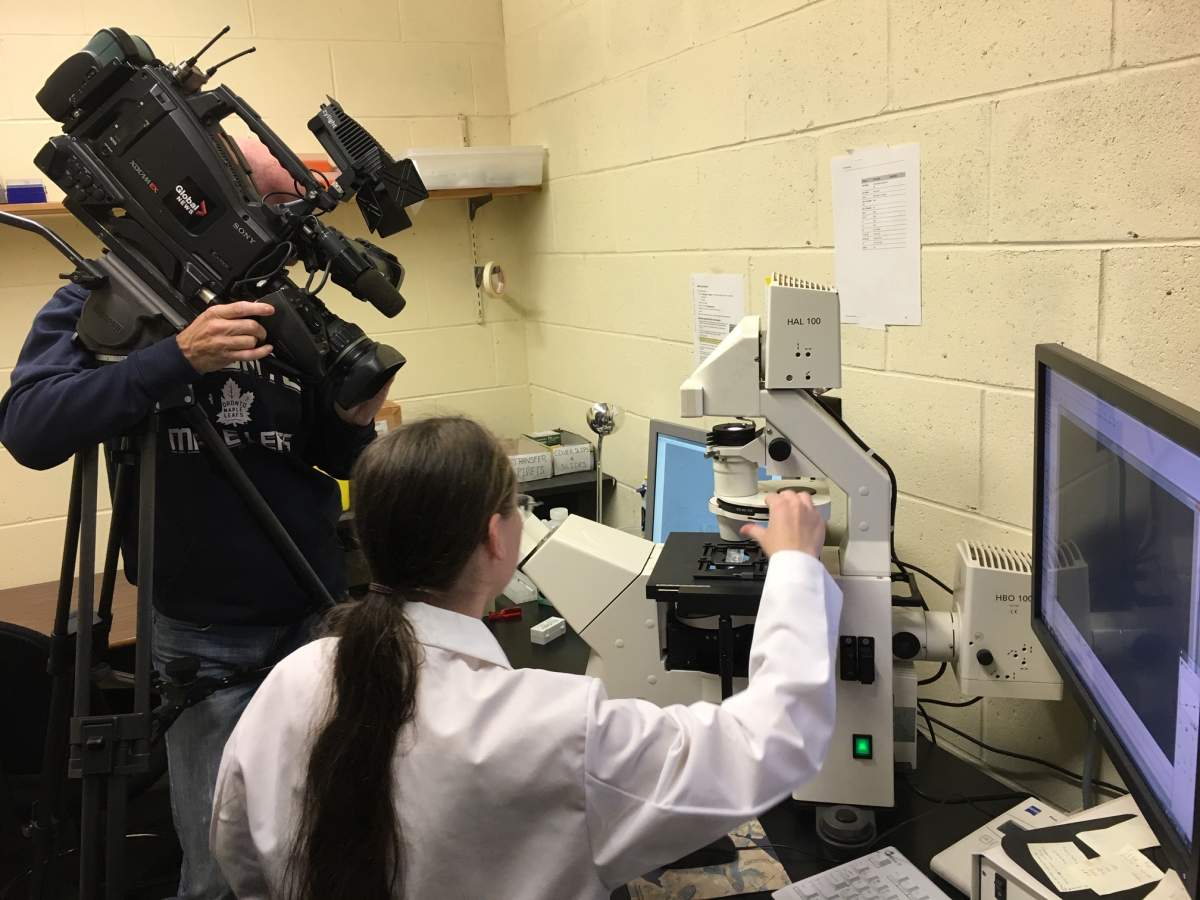A dirt sample taken from a wilderness area outside Halifax has led scientists at Dalhousie University to discover a new branch on the evolutionary tree of life.

It turns out the small dirt scrape contained one-celled microbial organisms that no one even knew existed, and the findings are included in a paper published Wednesday in the science journal Nature.
Alastair Simpson, a professor in Dalhousie’s Department of Biology, said the finding represents a “major new branch” that stands above the level of a new kingdom in terms of ranking lifeforms.
“These little organisms are all by themselves a group that is more different from everything we know about than animals are from fungi, said Simpson.
“So fungi and animals in an evolutionary sense are closer to each other than this new thing is to anything we had information on before.”
Researchers were able to sequence the genetic information of two “bizarre” microscopic predators called “hemimastigotes” said Simpson.
“The trick to this work was being able to get genetic information from this group for the first time. And not just a little genetic information but quite a lot of genetic information so that we are very confident of the results.”

Get daily National news
READ MORE: How one boy beat leukemia with new treatment
Hundreds of genes were analyzed and Simpson said it was clear that hemimastigotes did not belong to any known biological kingdom or even to any grouping of several kingdoms together.
Yana Eglit, a graduate student at Dalhousie, collected the dirt sample while hiking along a path outside Halifax.
In the laboratory, Eglit said she left the sample in a small dish filled with water and periodically checked the contents over a month-long period with a microscope.
She said one evening she detected the organisms swimming around. They are about two hundredths of a millimetre long and move by using a dozen or more flagella, which are the same structures as the tails of sperm cells.
“It looks kind of like a pistachio nut with little hairs coming from between the shells,” said Eglit.
“And it scurries around kind of awkwardly and it eats other complex single celled organisms.”
The Dalhousie research team calls the new branch of life “hemimastigophora.” Humans belong to a branch called Unikonta.
The discovery is considered crucial information for scientists who are piecing together how the complex cells of animals, plants and fungi have evolved over the last one to two billion years.
“Having realized now that we’ve been missing one of these major groups all this time, I expect it to realign quite a bit of research in trying to understand how complex cells evolved,” Simpson said.
Eglit said while similar types of organisms were seen in the past, it was before sophisticated genetic testing had been invented, so they didn’t know just how unique they were.
In another significant first, Simpson said Eglit has worked out how to grow the cell species in a lab and that will make future research work “a lot easier.”
Simpson said the information Dalhousie researchers have uncovered will be important for those who study the Earth’s ecology.
“Microbes in general are hugely important in the Earth’s ecosystem. The way the ocean is the way it is, or why soil is like soil – it’s to a large extent because of the microbes that are there and the activities they perform.”
He said researchers will now be able to detect hemimastigotes in genetic samples pulled from these environments, allowing for a better understanding of what’s there, and potentially, how different microbes interact.
Eglit said the tradition in naming species is to give them Greek or Latin names, but the researchers wanted to honour the fact the dirt sample was found on the traditional territory of the Mi’kmaq people in Nova Scotia.
As a result, one of the species has been named “Hemimastix kukwesjijk.” Kukwes is a hairy man-eating ogre from Mi’kmaq folklore.
“It just happens to be they have an ogre-like creature who is also hairy and terrifying and eats other creatures and it seems to match what this organism was so we figured we would give it that name,” said Eglit.













Comments